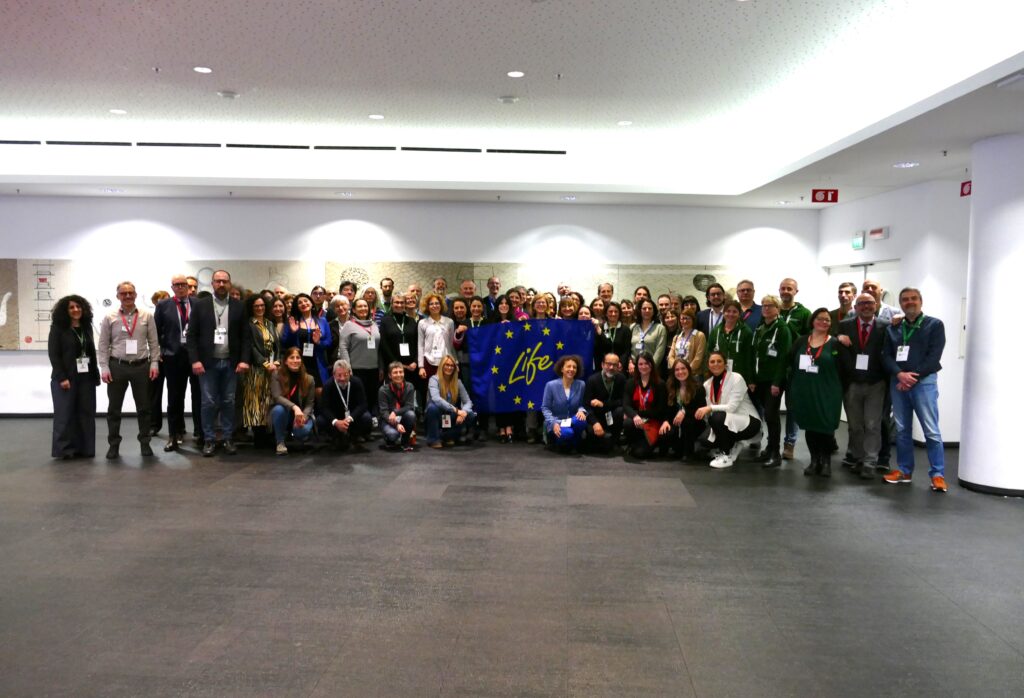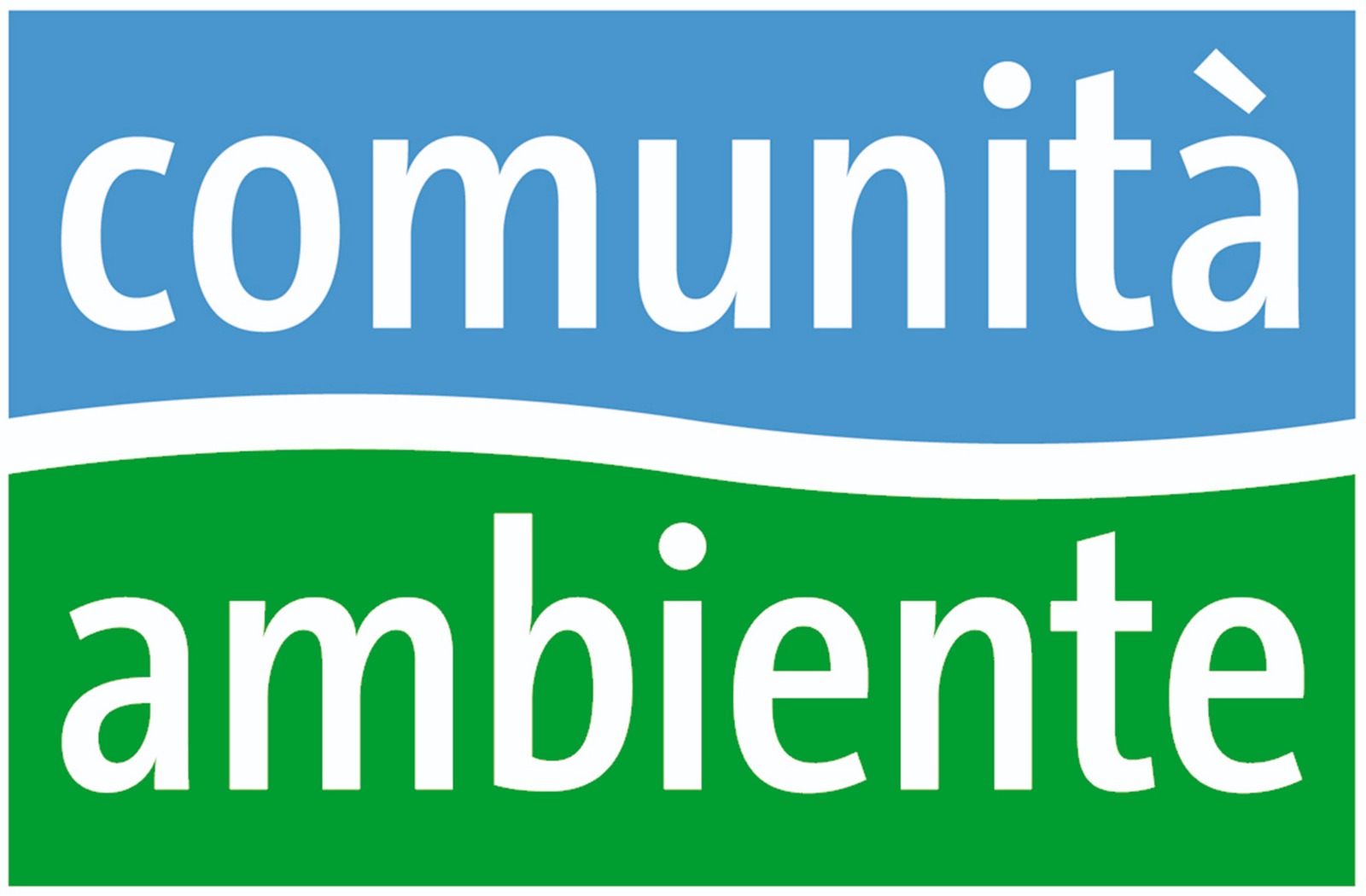LIFE NATCONNECT2030 (01/01/2024 – 31/12/2032)

Partners
Regione Lombardia – DG Territorio e Sistemi Verdi (capofila)
Regione Piemonte
Regione Emilia-Romagna
Regione Veneto
Provincia Autonoma di Trento
Autorità di Bacino del fiume Po
Agenzia Interregionale per il fiume Po
WWF Italia
LIPU – Lega Italiana Protezione Uccelli
Legambiente Lombardia Onlus
Ente regionale per i Servizi all’Agricoltura e alle Foreste (ERSAF)
Fondazione Lombardia per l’Ambiente (FLA)
Ente Parco Regionale Veneto Delta del Po Emilia Romagna
Comunità Ambiente
Consiglio di Bacino Brenta (affiliato)
Introduzione
Il progetto è stato approvato nell’ambito della Call LIFE-2022-STRAT-two-stage – Strategic Nature and Integrated Projects (SNAP), uno dei 12 progetti in cui la Commissione europea ha investito 233 mln di euro. Si tratta di un progetto LIFE Strategico per la Natura, finalizzato al raggiungimento degli obiettivi di conservazione della biodiversità, attraverso lo sviluppo delle azioni definite con i Prioritised Action Frameworks 2021-2027 (PAF) per la Rete Natura 2000 e, parallelamente, dare attuazione ad altri piani o strategie adottati a livello internazionale, nazionale, multiregionale o regionale per l’ambiente e lo sviluppo.
Obiettivi e azioni
Obiettivo del progetto è il consolidamento di un sistema di gestione integrato della rete Natura 2000 per garantire il raggiungimento degli obiettivi di conservazione delle Direttive Habitat e Uccelli, e sarà perseguito attraverso l’attuazione di un insieme di azioni ritenute strategiche tra quelle individuate come prioritarie nei 5 PAF interessati.

L’area di progetto ospita una ricca fauna selvatica e più di 840 siti Natura 2000, in un territorio di 100.000 Kmq, caratterizzato dalla presenza dell’Arco Alpino e del fiume Po e con oltre 24 milioni di abitanti (una delle aree più densamente popolate d’Europa).
LIFE NatConnect 2030 comprende anche diverse attività di comunicazione multitarget e multilivello, e azioni di capacity building.
Le 5 linee strategiche alla base del progetto sono:
1. ripristino ecologico di habitat e specie di interesse conservazionistico;
2. rafforzare gli elementi di connessione della rete ecologica;
3. mitigazione e adattamento ai cambiamenti climatici;
4. riduzione dell’impatto delle specie aliene invasive;
5. rafforzare la governance di rete natura 2000 e delle aree di connessione.
Area territoriale: territorio delle 5 Regioni e Province Autonome coinvolte nel progetto, che comprende 843 siti Natura2000, ricadenti nelle regioni biogeografiche alpina, continentale, mediterranea e marina mediterranea.
Budget di progetto: oltre46 M€
• 60% cofinanziamento UE: circa 28 M€
• 40% cofinanziamento a carico dei partner: oltre 17 M€
• Co-finanziamento di Fondazione Cariplo: 1.300.000€
Inoltre, il progetto intende movimentare circa 540 M€ di fondi complementari che concorrono all’implementazione dei PAF delle 5 Regioni. Tra questi, i Fondi del FEASR (49%), del PR-FESR (15%), del PR Interreg VI-A Italia-Svizzera 2021-2027, della Strategia Forestale Nazionale Lombardia, del MASE per il contenimento Esotiche Interesse Unionale Lombardia, del Piano Nazionale Recupero e Resilienza (33%) dedicati al progetto “rinaturazione del Po” e altri fondi regionali e privati.
Organizzazione del progetto
Il progetto è organizzato in 9 Work Package (WP)e 61 task
WP 1: coordinamento e attività di gestione del progetto;
WP 2: ripristino di habitat e specie;
WP 3: rafforzare gli elementi di connessione ecologica della Rete Ecologica;
WP 4: riduzione impatto cambiamenti climatici;
WP 5: riduzione impatto derivante dalle IAS;
WP 6: rafforzare la governance di Rete Natura 2000 e delle aree di connessione;
WP 7: comunicazione e coinvolgimento degli stakeholder;
WP 8: sostenibilità, replicabilità e sfruttamento dei risultati di progetto;
WP 9: monitoraggio, coordinamento e mobilitazione dei fondi complementari e integrazione con altre politiche.
Impatto atteso
L’ambizione di LIFE NatConnect2030 è quella di avere un impatto a livello nazionale ed europeo dimostrando la fattibilità dell’implementazione di 5 PAF e contribuendo in maniera sostanziale agli obiettivi del Green Deal:
• Impatto atteso 1: mobilitazione dei fondi necessari per la piena implementazione dei PAF, successivamente alla fine del progetto.
• Impatto atteso 2: favorire, nel lungo periodo, ad un miglioramento dello Stato di Conservazione sulle popolazioni di specie e sugli habitat di interesse comunitario e i servizi ecosistemici da loro erogati.
• Impatto atteso 3: miglioramento delle condizioni ecologiche e della funzione di connettività del fiume Po.
• Impatto atteso 4: miglioramento e rafforzamento su lungo periodo del ruolo degli Osservatori Regionali per la Biodiversità nella raccolta, messa a sistema, analisi e condivisione di dati su habitat e specie di importanza comunitaria (artt. 11 e 17 della Direttiva Habitat), sia all’interno che all’esterno di Rete Natura 2000.
LIFE NatConnect2030, oltre a contribuire al Kunming-Montreal Global Biodiversity Framework, concorrerà al raggiungimento di diversi obiettivi delle politiche europee tra cui:
• Strategia dell’UE sulla Biodiversità per il 2030.
• Strategia forestale europea per il 2030.
• Direttiva Quadro sulle Acque 2000/60/CE.
• Regolamento dell’UE sulle Specie Esotiche Invasive.
• Strategia UE di adattamento ai cambiamenti climatici.
• EU Nature Restoration Law.
• EU Strategy on sustanaible tourism.
• Direttiva UE per l’utilizzo sostenibile dei prodotti fitosanitari.

Introduction
The project was approved under the Call LIFE-2022-STRAT-two-stage – Strategic Nature and Integrated Projects (SNAP) and is one of the 12 projects in which the European Commission has invested EUR 233 million. This is a LIFE Strategic Nature Projects that aims to achieve biodiversity conservation objectives, through the development of actions defined by the Prioritised Action Frameworks 2021-2027 (PAF) for the Natura 2000 network and at the same time, implement other environment and development plans or strategies adopted at international, national, multi-regional or regional level.
Objectives and actions
The objective of the project is to consolidate an integrated Natura 2000 network management system to ensure the achievement of the conservation objectives of the EU Habitats and Birds Directives. The project will be pursued through the implementation of a set of actions deemed to be strategic among those identified as priorities in the 5 PAFs concerned.

The project area, corresponding to 100,000 square kilometers, is home to a rich wildlife and more than 840 Natura 2000 sites and is characterized by the presence of the Alps and the Po River and over 24 million inhabitants (it is one of the most densely populated areas of Europe).
LIFE NatConnect2030 also includes several multi-target and multi-level communication activities, and capacity building actions.
The 5 strategic lines at the base of the project are:
1. Ecological restoration of habitats and species of conservation interest;
2. Strengthening the connection elements of the ecological network;
3. Mitigation and adaptation to climate change;
4. Reduction of the impact of invasive alien species;
5. Strengthening the governance of the Natura 2000 network and of the connection areas.
Project area: territory of the Regions involved in the project, with 843 Natura2000 sites, in the Alpine, Continental, Mediterranean and Mediterranean marine biogeographical regions.
Project budget: over 46 M€
• 60% EU co-financing: about 28 M€
• 40% co-financing from partners: over 17 M€
• Co-funding of Fondazione Cariplo: 1.300.000 €
In addition, the project intends to move about 540 M€ of complementary funds that contribute to the implementation of the PAF of the 5 Regions. These include EAFRD funds (49%), ERDF (15%), Interreg Programme VI-A Italy-Switzerland 2021-2027, the Lombardy National Forestry Strategy, MASE (Ministry for the Environment) for the containment of IAS of Union Interest in Lombardy, the Piano Nazionale Recupero e Resilienza (33%) dedicated to the project “Rinaturazione del Po” and other regional and private funds.
Project organization
The project is organized in 9 Work Packages (WP) and 61 tasks
WP 1: Project coordination and management activities
WP 2: Habitat and species restoration
WP 3: Strengthening the ecological connection elements of the Ecological Network
WP 4: Climate change impact reduction
WP 5: IAS impact reduction
WP 6: Strengthening the governance of the Natura 2000 network and of the connection areas
WP 7: Communication and Stakeholder Engagement
WP 8: Sustainability, replicability and exploitation of project results
WP 9: Monitoring, coordination and movement of complementary funds and integration with other policies.
Expected impact
The ambition of LIFE NatConnect2030 is to have an impact at the national and european level by demonstrating the feasibility of implementing 5 PAFs and contributing substantially to the objectives of the Green Deal:
• Expected impact 1: mobilisation of the funds necessary for the full implementation of the PAF, after the end of the project
• Expected impact 2: encouraging, in the long term, an improvement of the conservation status of species and habitats of EU interest and the ecosystem services they provide
• Expected impact 3: improvement of the ecological conditions and the connectivity function of the river Po
• Expected impact 4: Long-term improvement and strengthening of the role of Regional Biodiversity Observatories in the collection, systemization, analysis and sharing of data on habitats and species of EU importance (Articles 11 and 17 of the Habitats Directive) both inside and outside the Natura 2000 network.
LIFE NatConnect2030, in addition to contributing to the Kunming-Montreal Global Biodiversity Framework, will contribute to the achievement of several European policy objectives, including
• EU Biodiversity Strategy for 2030
• European forestry strategy for 2030
• Water Framework Directive 2000/60/EC
• EU Regulation on Invasive Alien Species
• EU climate change adaptation strategy
• EU Nature Restoration Law
• EU Strategy on sustanaible tourism
• EU directive on the sustainable use of plant protection products
